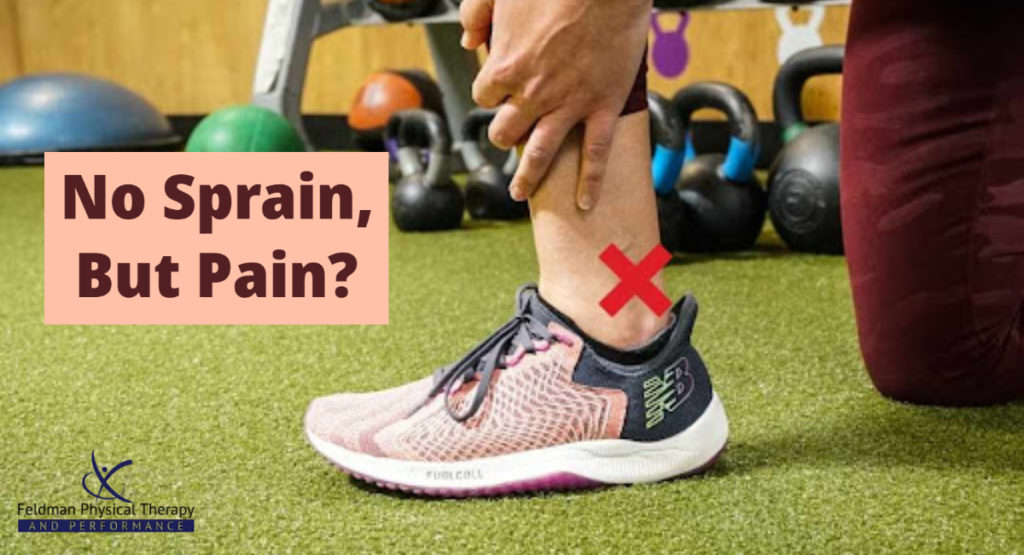No Sprain but Pain?
Are you experiencing lateral ankle pain and wondering why? Are you trying to recall when you “rolled or twisted” your ankle but you can’t? Although we often associate lateral ankle pain with a sprain, it’s not the only thing that can cause nagging discomfort.
This blog is specifically going to focus on lateral ankle discomfort. By that, we mean pain that sits behind the bone on the outside of your ankle. It sits near the red X in the photo to the right. Without a traumatic sprain, pain in this area is often related to the peroneal musculature & tendons.
The peroneus longus & brevis musculature and tendons sit in the outer compartment of the lateral leg. In a non-weight-bearing position, these muscles help our foot plantarflex (point downward) and evert (moving the sole of your foot outwards). While walking, they are important stabilizing structures for our feet and ankles. When impacted, pain in this area can change the way we walk, run and carry on daily activities.
What do we know about peroneal tendinopathy? Symptoms are often reproduced with palpation of the tendon, tendon loading, and tendon stretching.
What do we know about healing tendons? Well, they need to be loaded… to a certain extent. Continuing to push through and do too much over time can be detrimental to the healing process. This is where keeping pain at a manageable level (0-4/10) is important! Continuing activity in a graded and controlled fashion is the most important when it comes to addressing this type of pain. Might I also add, that if you’re a runner experiencing lateral ankle pain, it may be worth having someone evaluate your running mechanics.
If you’re curious as to how to better care for this, check out this video! It will give you some more information about the injury as well as several exercises to help you alleviate your discomfort!
Happy Healing!
Dr. Ashley
